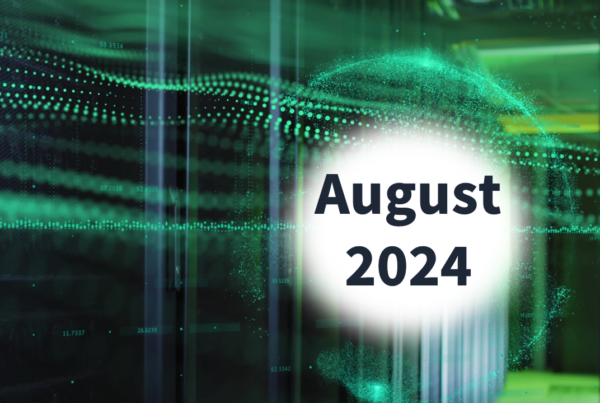
Advanced Metering Infrastructure (AMI) is becoming ubiquitous throughout the utility industry, providing many sources of value for both utilities and ratepayers as utilities unlock previously unavailable insights to help customers understand their consumption and use that information to take action.
Navigant Research summed up the current industry transformation in its most recent Home Energy Management Overview Q3 2019, saying, “hardware devices such as smart meters and advanced thermostats can be useful for the data they provide and for sensing conditions in a home. The problem is not data volume per se. The issue for utilities is how to skillfully organize and analyze data in ways that unlock enduring value for customers. The software tools and approaches from a decade ago must give way to ones that provide deeper insights and can support more personalized customer engagements.”
Just as consumer engagement experts like Netflix leverage customer interaction data to inform their strategies, utilities have the opportunity to create a comprehensive energy profile for every single customer that drives targeted engagement and efficiencies for utility programs. And as access into greater data insights grows, along with the universal trend toward digitalization, there is a new urgency for utilities to integrate enterprise analytics into real-time strategies that use data to generate value for both its business and customers.
Consider electric vehicles (EVs), which present both a challenge and an opportunity for utilities. If they are integrated properly, they offer increased revenue potential. But at the same time, they threaten grid stability. AMI-based EV detection and enterprise-level analytics unlock the potential for smart vehicle-to-grid (V2G) integration, targeting EV owners precisely and ensuring the EV adoption curve ramps up smoothly to the benefit of both utilities and customers.
A Deeper Dive: Enterprise Analytics and EVs
The International Energy Agency (IEA) estimates that there will be between 125-220 million EVs on the road by 2030. Most of those vehicles will be charged at home. Given the massive opportunity for EV ownership to increase utility revenue, reduce carbon emissions and reinforce the utility / customer relationship and the significant potential pitfalls caused by increased localized load on the grid, utilities are moving quickly to introduce enterprise analytics-based platforms.
In the 2019 update of its Utility 2.0 Long Range Plan, for example, PSEG Long Island identifies EV Analytics as one of two high priority programs for 2019 implementation. The utility tells regulators that its “enterprise analytics solution provides insights on EV customer behavior, their charging patterns as well as the potential impact of these EVs on the grid” and goes on to say that “PSEG Long Island will be able to better serve its customers by designing new rates options for them along with EV programs tailored to meet their needs.” Further, the report says, “EV Analytics will also mitigate any potential transformer overload conditions associated with projected EV growth and adoption on Long Island” and allow the utility to “proactively repair or replace transformers susceptible to overloads due to multiple EV customers, resulting in a more reliable network for PSEG Long Islands customers.”
There are three essential enterprise analytics data points that enable utilities like PSEG Long Island to more accurately anticipate the effect that EV charging will have on the grid, streamline rate and grid planning, improve customer relationships and realize greater EV revenue potential.
1) Number and location of EVs
Because EV ownership often grows in pockets, the effects on the grid are typically highly localized. Identifying feeder lines and individual transformers that are likely to come under strain due to multiple EVs should inform forecasting, grid upgrades and grid planning, as well as to define new EV tariffs and target roll outs of EV rates or controlled chargers to encourage load shifting.

2) EV Charger size
The size of the chargers in use is directly proportional to the impact on the grid. For example a single 10 kW charger has a much greater impact on the grid than two 5 kW chargers. Data revealing a region’s charger size mix allows utilities to prevent grid strain and successfully implement charger optimization programs.
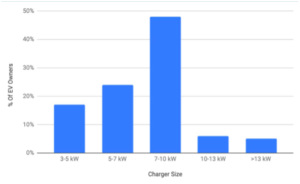
3) Time of charging
Understanding the time basis of EV charging is key in calculating peak load impacts and designing successful EV rate programs and load shifting initiatives. Using artificial intelligence-powered heat maps, utilities can identify periodic EV charging, which appears on the map as a high intensity horizontal “streak.”
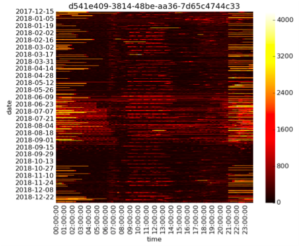
[Caption: This customer is already exhibiting behaviors consistent with that of a customer on a TOU rate plan or load control, since their EV charger seems to consistently be turned on at approximately 9 pm and runs as long as necessary overnight. This customer could be targeted with positive outreach encouraging them to keep it up and reminding them how much they are saving by charging overnight vs. a typical home, assuming they are already on a TOU rate.]
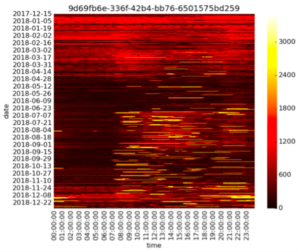
Using these three data points, utilities can then gauge the impact of EV on operations under different scenarios, and identify specific steps to implement more targeted, less costly and more successful EV programs that maximize opportunities while mitigating challenges.
# of Transformers at Risk per Year
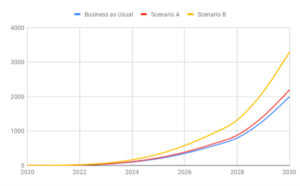
Enterprise analytics-informed action plans reveal clear paths to incentivize EV ownership while also maintaining grid balance through EV rebates on high speed charges and EV-specific TOU rates and EV-charger load shifting incentives that increase utility revenue and enable load balancing on the grid.
Artificial intelligence, enterprise analytics and load disaggregation are opening up new potential in connection with myriad use cases across utility organizations, such as EV programs outlined above. With the benefit of previously unavailable information and intelligence, it is now possible to better understand key drivers of various utility programs, streamline decision making, prove return on AMI investments to regulators and create a personalized energy experience for every customer.
To download a copy of Bidgely’s Enterprise Analytics Solution Brief that outlines other utility use cases for enterprise analytics beyond EVs like non-wires solutions, demand side management and rooftop PV, go to: https://go.bidgely.com/GatedContent-EnterpriseAnalyticsSolutionsBrief_LP-Registration.html.







